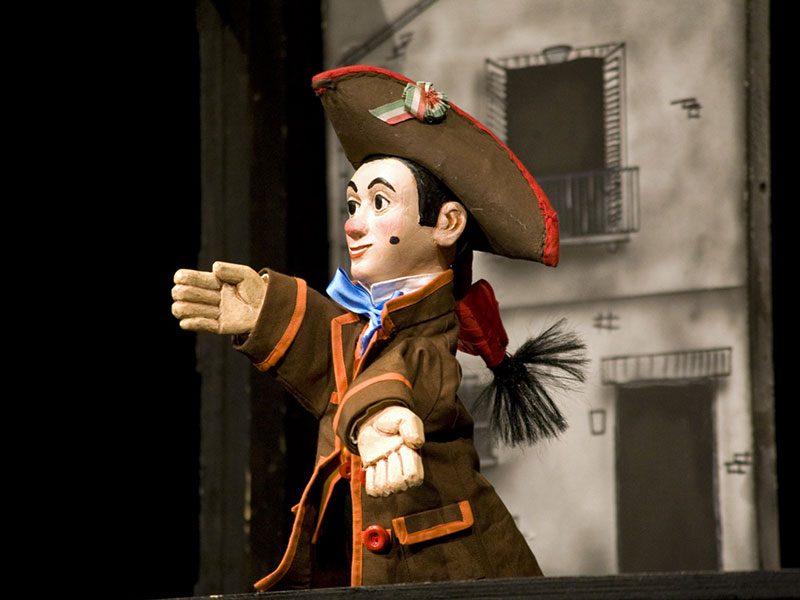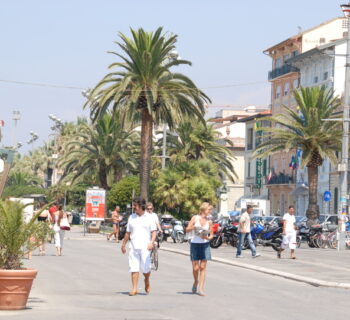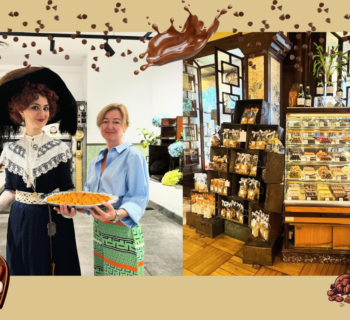In Italian, we say “to be a marionette” or “to be a puppet” to describe characterless or unreliable people who are manipulated by others. Although the saying derives from the fact that both move thanks to the skill of the artists who handle them, in everyday language, we often forget that they are two different things.
What is the difference between marionettes and puppets?
We asked Augusto Grilli, founder and president of the Grilli Marionette Foundation, which is not far from Turin’s Automobile Museum, who has created Casa Gianduja, the theatre-museum dedicated to puppets.
“A marionette is moved from above by means of strings, whereas a puppet is controlled from below by hands inserted under its clothes. There are also marionettes called pupi in the Sicilian tradition, but they function in a different way, thanks to iron bars instead of strings. Usually, the puppet theatre offers traditional plots or derived from the Commedia dell’Arte, while the Sicilian Puppet Opera draws inspiration from the novels, poems and songs of the Charlemagne cycle”.
Read here about Gianduja, the protagonist of Turin's Carnival!
The history of Casa Gianduja
This is just one of the many things you can learn at Casa Gianduja, the extraordinary theatre museum that tells the story of the Grilli family’s puppet collection, started in 1946. The museum collects thousands of puppets, marionettes, backdrops, miniature theatres, and props produced in Italy between the eighteenth and the second half of the twentieth centuries.
Next to the museum, there is a 100-seat theatre that also puts on shows featuring the marionettes and puppets that belong to the museum. In the outdoor area, there is also a carpentry workshop dedicated to the construction and restoration of puppets and where workshops are organised to introduce children to the world of puppetry. In the near future, there are also plans to set up an urban vegetable garden and a special educational farm, where even the animals will be puppets.
The name Casa Gianduja was chosen in honour of the protagonist of Turin’s carnival, who had initially been a puppet and had become so popular that a theatre had been dedicated to him. Since Gianduja was a revolutionary character, welcoming and always ready to help the weakest, the new space wanted to be inspired by the values he embodied and is now a place of sharing, where adults and children feel at home.
Listen to our podcast episode about Gianduja!
Casa Gianduja offers a rich program of performances, where audiences can go back to their childhood by rediscovering the Piedmontese puppetry tradition.
The secret of Gioppino
Thanks to Augusto Grilli’s explanations, we had the opportunity to learn some new expressions that you, passionate students of the Italian language and culture, are bound to be interested in. Did you know that in Bergamo, puppets are called gioppini? This is because they are inspired by Bergamo’s mask of Gioppino, whose adventures were shown in puppet comedies together with those of characters from the Commedia dell’Arte. Since Gioppino represented a simpleton with a very rough tongue and manners, in the Bergamo area people say “to be a Gioppino” to describe an overly extroverted person.
Find out more about learning Italian in our Turin school!
Scuola Leonardo da Vinci Turin
The welcoming friendly atmosphere of our school will make you feel at home and you can relax with your classmates in the small gardens of the adjacent pedestrian area.
Latest posts by Scuola Leonardo da Vinci Turin (see all)
- What is the difference between the Carabinieri and the Police? - November 26, 2025
- 5+1 scenic spots in Turin with the Scuola Leonardo - October 15, 2025
- Contemporary art in Turin? It’s also at the Scuola Leonardo! - October 1, 2025










